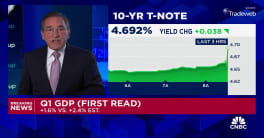Yesterday the California Association of Realtors® (C.A.R.) reported that home affordability in the state was falling rapidly. Today the National Association of Home Builders (NAHB) and Wells Fargo reported a similar, if less acute situation on a national level.
The NAHB/Wells Fargo Housing Opportunity Index (HOI) showed that 69.3 percent of new and existing homes sold during the second quarter of 2013 were affordable to families earning the median national income of $64,400. In the first quarter of the year the index indicated that 73.7 percent of homes were affordable using that measure. The second quarter marked the first time had HOI fallen below below 70 percent since late 2008.
For the fourth consecutive quarter Ogden-Clearfield, Utah, was rated the nation's most affordable major housing market with 92.8 percent of all new and existing homes sold being affordable to families earning the area's median income of $70,800. This was down, however, from the 93.4 percent affordability measure posted by Ogden-Clearfield in the previous quarter. The most affordable small market was Utica-Rome, New York where just over 97 percent of new and existing homes were affordable to families earning that area's median income of $63,800.
"Housing affordability has been hovering near historic highs
for the past several years, largely due to exceptionally favorable
mortgage rates and low prices during the recession," observed NAHB
Chairman Rick Judson. "Now that markets across the country are
recovering, home values are strengthening at the same time that the
cost of building homes is rising due to tightened supplies of
building materials, developable lots and labor."
"Rising home prices signal the improving health in
housing markets, and the median price of all new and existing U.S.
homes sold in this year's second quarter, at $202,000, was well
ahead of the second quarter 2012 median price of $185,000,"
observed NAHB Chief Economist David Crowe. "Together with rising
mortgage rates, this contributed to affordability slipping to the
lowest level in more than four years. Such movement would be less
concerning were it not for ongoing discussions regarding potential
changes to the mortgage interest deduction and federal support for
the secondary mortgage market, both of which play enormous roles in
keeping homeownership affordable."
Other major U.S.
housing markets at the top of the affordability chart in the second
quarter included Indianapolis-Carmel, Indiana; Harrisburg-Carlisle,
Pennsylvania; and Youngstown-Warren-Boardman, Ohio-Pennsylvania.
Other most affordable small markets were Kokomo, Indiana.;
Cumberland, Maryland; and Vineland-Millville-Bridgeton, New Jersey.
For a third consecutive quarter, San Francisco-San Mateo-Redwood City, Calif. held the lowest spot among major markets on the affordability chart. There, just 19.3 percent of homes sold in the second quarter were affordable to families earning the area's median income of $101,200. Other major metros at the bottom of the affordability chart included Los Angeles-Long Beach-Glendale; and Santa Ana-Anaheim-Irvine, and New York-White Plains-Wayne, New York and New Jersey. All of the small market at the low end of the affordability list were in California led by Santa Cruz-Watsonville and San Luis Obispo-Paso Robles, and Salinas. These findings are consistent with the information provided yesterday by C.A.R. which found median homes in California accessible to only about 36 percent of the population and in the San Francisco area at less than half that rate.







